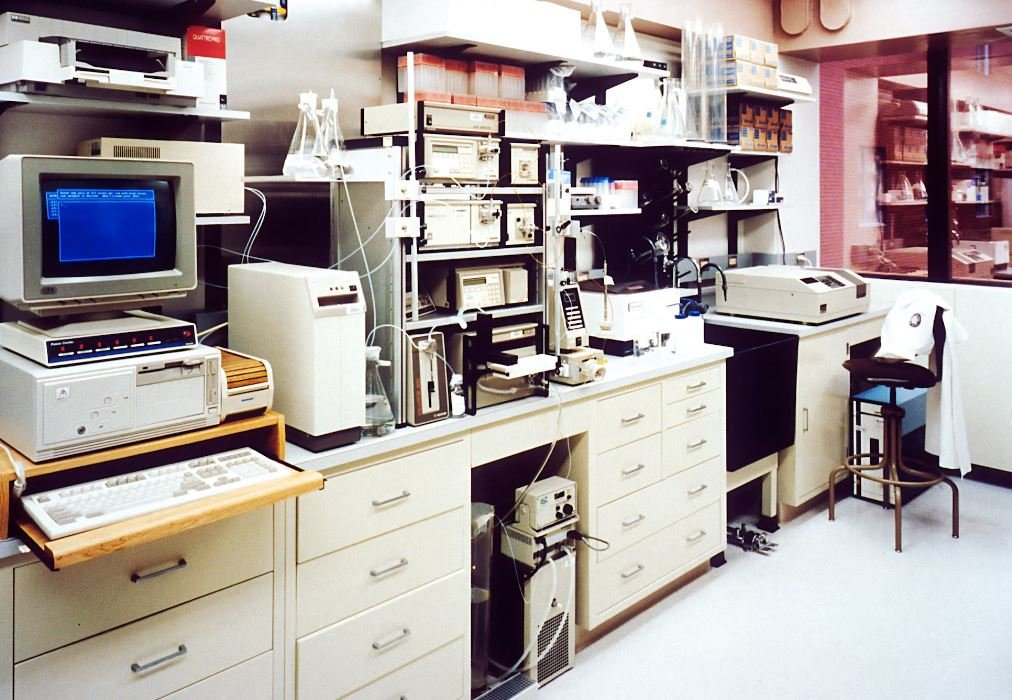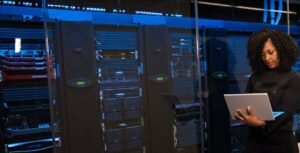How to AI Upscale Video
With the rapid development of artificial intelligence (AI) technology, upscaling low-resolution videos has become more accessible and effective than ever. AI-based upscaling algorithms can improve video quality, enhance details, and even increase resolution. In this article, we will explore the process of upscaling videos using AI and discuss its benefits and limitations.
Key Takeaways
- AI upscaling uses sophisticated algorithms to enhance video quality.
- Upscaling can improve details and resolution in low-resolution videos.
- Choosing the right upscaling algorithm is crucial for optimal results.
- AI upscaling may not always produce perfect results and can be computationally intensive.
- Ensure you have the necessary hardware and software for AI upscaling.
Understanding AI Upscaling
AI upscaling leverages machine learning algorithms to analyze low-resolution videos and enhance their quality. Essentially, these algorithms learn from a vast dataset of high-resolution videos and apply that knowledge to improve the details and resolution of lower-quality content. *AI upscaling algorithms can automatically identify patterns and features in videos, filling in missing or unclear information to create a visually improved result.* This can be particularly useful for restoring old or degraded footage, enhancing videos for modern displays, or simply improving the overall viewing experience.
The AI Upscaling Process
AI upscaling typically involves the following steps:
- Preparation: Gather the necessary hardware and software for AI upscaling, including a powerful computer equipped with a capable graphics card (GPU) and an AI upscaling application or plugin.
- Data collection and training: Collect high-resolution video data to train the upscaling algorithm. This data can include various samples and reference videos, allowing the algorithm to learn and generalize different scenarios.
- Input and processing: Provide the low-resolution video as input to the AI upscaling application or plugin. The algorithm will process the video and apply enhancement techniques to improve its quality.
- Output and review: Review the upscaled video to assess the level of enhancement achieved. Adjust settings or apply additional techniques if necessary.
- Export and utilization: Finally, export the upscaled video in a suitable format for your desired application, whether it’s for personal viewing, professional projects, or online distribution.
Choosing the Right Upscaling Algorithm
When it comes to AI upscaling, there are various algorithms available, each with its strengths and weaknesses. It’s important to choose the right algorithm for the specific video and desired outcome. Some popular upscaling algorithms include:
- Super Resolution: A widely used algorithm that enhances details and improves resolution through pixel- and feature-based analysis. It’s suitable for general upscaling purposes.
- Enhanced Super Resolution: This algorithm builds upon Super Resolution by incorporating additional techniques, such as noise reduction and image stabilization, for superior results.
- Deep Learning upscaling: Based on deep neural networks, this algorithm works well for upscaling videos with complex patterns and textures, but it can be more computationally intensive.
Considerations and Limitations
While AI upscaling offers impressive results, it’s important to be aware of its limitations and consider certain factors:
- Hardware requirements: AI upscaling can be computationally intensive, so ensure you have a powerful computer with a capable GPU to handle the processing efficiently.
- Software availability: Check if the AI upscaling software or plugin you’re using supports the video format and resolution you’re planning to upscale.
- Quality constraints: Although AI algorithms can significantly enhance video quality, they may not always achieve perfect results, especially if the source video is heavily degraded or the upscaling settings are not optimized.
AI Upscaling and Its Applications
The advancements in AI upscaling have led to a wide range of applications across different industries. Some notable examples include:
| Industry | Application |
|---|---|
| Media and Entertainment | Restoration of classic films and TV shows |
| Video Gaming | Enhancement of graphics and textures in older games |
| Surveillance | Improved video analysis and identification |
Conclusion
AI upscaling is a powerful tool for improving the quality, details, and resolution of low-resolution videos. By harnessing the capabilities of machine learning algorithms, we can enhance visually appealing content, restore old footage, and elevate the overall viewing experience. However, *it remains crucial to choose the right upscaling algorithm, consider hardware requirements, and be realistic about the potential limitations to achieve the best results.* With the ongoing advancements in AI technology, the possibilities and applications of AI upscaling continue to expand, making it an exciting field to explore and utilize in various domains.

Common Misconceptions
Misconception 1: AI Upscaling Can Improve the Quality of Any Video
One common misconception about AI upscaling is that it can automatically improve the quality of any video. However, this is not entirely true. While AI upscaling techniques have advanced significantly in recent years, they are not magical solutions that can enhance the quality of a low-resolution or poorly shot video.
- AI upscaling works best on high-quality videos with clear details and good lighting.
- Low-resolution videos may not benefit significantly from AI upscaling and may even result in worse quality.
- No AI algorithm can fundamentally add details that are not present in the original video.
Misconception 2: AI Upscaling Always Produces Perfect Results
Another misconception is that AI upscaling always produces flawless results. While AI algorithms can certainly enhance the quality of a video, there are limitations to what they can achieve.
- AI upscaling can introduce artifacts and visual distortions, especially when applied excessively.
- Unrealistic expectations can lead to disappointment when the AI-generated results do not match the desired outcome.
- Understanding the strengths and limitations of AI upscaling is crucial to managing expectations.
Misconception 3: AI Upscaling Is a Foolproof and Fully Automated Process
Some people mistakenly believe that AI upscaling is a completely automated process that requires no human involvement. However, this is not entirely accurate.
- AI algorithms require training and are only as good as the data they have been trained on.
- Human guidance and supervision are often required to optimize the results of AI upscaling.
- Choosing the right parameters and settings is crucial for achieving the desired outcome.
Misconception 4: AI Upscaling Can Make Old Videos Look Like They Were Shot in High Definition
Some people expect AI upscaling to magically transform old, low-resolution videos into high-definition quality. However, these expectations are not entirely realistic.
- AI upscaling can improve the visual quality of old videos to some extent, but they will not look as sharp and detailed as videos shot in true high-definition.
- The limitations of the original video’s quality and resolution cannot be fully overcome by AI upscaling.
- AI upscaling is a valuable tool for enhancing older videos, but it cannot create details that were never captured in the original recording.
Misconception 5: AI Upscaling Is an Expensive and Complex Process
Many people believe that AI upscaling is a costly and complex process that requires specialized knowledge and expensive hardware. However, this is not entirely accurate.
- There are various user-friendly AI upscaling tools available online that do not require extensive technical expertise.
- AI upscaling can be performed on regular personal computers or even on cloud-based platforms.
- While some advanced AI upscaling techniques may require more powerful hardware or specialized software, basic upscaling can often be done with accessible tools.

Understanding Video Resolution
Before diving into how to AI upscale video, it is important to understand the concept of video resolution. The resolution of a video refers to the number of pixels displayed on screen, usually denoted in width x height format.
Resolution Standards
Video resolutions can vary depending on the medium and purpose. Let’s take a look at some common resolution standards used in different contexts:
| Resolution Standard | Width x Height (Pixels) | Aspect Ratio |
|---|---|---|
| Standard Definition (SD) | 720 x 480 | 4:3 |
| High Definition (HD) | 1920 x 1080 | 16:9 |
| Ultra High Definition (UHD) | 3840 x 2160 | 16:9 |
| 4K | 4096 x 2160 | ≈17:9 |
Understanding Upscaling
Upscaling a video involves increasing its resolution through various techniques. AI-based upscaling, in particular, is gaining popularity for its ability to enhance video quality without significant loss of details. Let’s explore some benefits of AI-based upscaling:
Enhanced Image Quality
AI upscaling algorithms use deep learning techniques to analyze and enhance low-resolution images. By leveraging machine learning models, these algorithms can intelligently fill in missing details and produce sharper, more realistic video frames.
Improved Viewing Experience
With AI upscaling, even lower-resolution videos can be enjoyed on high-resolution displays without appearing pixelated or blurry. This allows viewers to experience content in greater clarity and detail.
No Aspect Ratio Distortion
Traditional upscaling techniques may distort the original aspect ratio of a video, resulting in stretched or disproportionate frames. AI upscaling methods, however, can maintain the correct aspect ratio, preserving the intended visual composition of the video.
Enhanced Video Streaming
AI upscaling can also benefit video streaming platforms. By upscaling lower-resolution content, streaming services can offer improved video quality to their viewers, leading to a more engaging and immersive streaming experience.
Benefits of AI Upscaling
Let’s summarize the benefits of using AI to upscale video:
| Benefit | Description |
|---|---|
| Enhanced Image Quality | AI upscaling improves the visual quality of the video by adding missing details. |
| Improved Viewing Experience | Viewers can enjoy higher-quality videos on high-resolution displays without pixelation. |
| No Aspect Ratio Distortion | AI upscaling maintains the intended aspect ratio of the video, avoiding distortion. |
| Enhanced Video Streaming | Video streaming platforms can offer improved video quality through AI upscaling techniques. |
Conclusion
AI upscaling has revolutionized the way we enhance video quality, providing a means to upscale low-resolution content while maintaining or improving its visual fidelity. By leveraging deep learning algorithms, AI upscaling techniques have the potential to enhance the viewing experience and raise the bar for video quality in various applications.
Frequently Asked Questions
How does AI video upscaling work?
Rather than traditional upscaling methods that simply interpolate pixels to increase resolution, AI video upscaling utilizes deep learning algorithms to analyze and understand the content of each frame. It then predicts and generates higher-resolution pixels, leading to significantly improved visual quality.
What are the benefits of AI video upscaling?
AI video upscaling offers several notable benefits, including:
- Enhanced visual quality and clarity
- Sharper details and reduced blurriness
- Improved viewing experience on larger screens
- Enabling older videos to be enjoyed in higher resolutions
What types of videos can be upscaled using AI?
AI video upscaling can be applied to various types of videos, such as:
- Older movies
- Low-resolution footage
- Archival and historical footage
- Home videos
Which AI models are commonly used for video upscaling?
Several popular AI models used for video upscaling include:
- ESRGAN (Enhanced Super-Resolution Generative Adversarial Networks)
- Topaz Video Enhance AI
- Dain-App (Depth-Aware Video Frame Interpolation)
- Waifu2x (Anime-style video upscaling)
What software or tools are available for AI video upscaling?
There are several software and tools available for AI video upscaling, including:
- Topaz Video Enhance AI
- VEAI (Video Enhance AI by Topaz Labs)
- Dain-App
- Video2X
- Waifu2x
Can AI upscaling convert low-resolution video to 4K?
Yes, AI upscaling can convert low-resolution videos to 4K resolution. By employing deep learning and predictive algorithms, AI models can generate additional pixels to increase the resolution and enhance the visual quality of the video.
Is AI video upscaling a time-consuming process?
The time required for AI video upscaling depends on various factors, such as video length, hardware capabilities, and the specific AI model used. Generally, the upscaling process can take anywhere from a few minutes to several hours.
Does AI video upscaling require powerful hardware?
While AI video upscaling can benefit from powerful hardware to speed up the processing time, it is not always essential. Many AI upscaling tools are designed to run on consumer-grade hardware, making it accessible to a wider audience.
Can AI video upscaling improve the audio quality of a video?
No, AI video upscaling primarily focuses on enhancing the visual quality of videos by increasing the resolution. It does not directly impact the audio quality. However, there are separate AI algorithms available for audio enhancement and restoration.
Is AI video upscaling suitable for all types of videos?
While AI video upscaling can significantly improve the visual quality of various types of videos, the effectiveness may vary depending on the source material. Videos with substantial noise, artifacts, or extreme low-resolution might have limitations in achieving optimal results.




